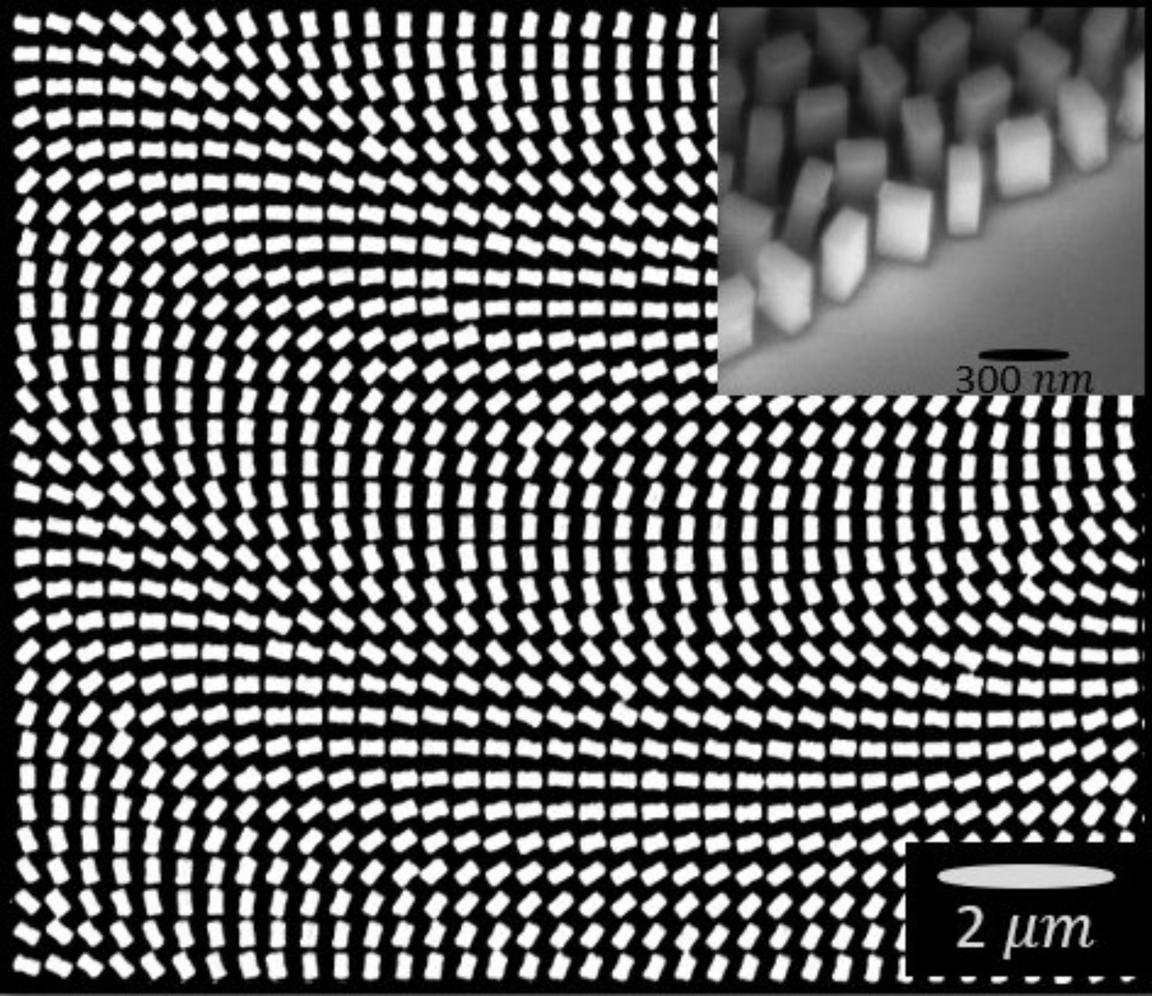Closer look: Smaller than small
Let’s get up close, so close that it’s hard to grasp. Although not for everyone. This image was taken with a scanning electron microscope and shows tiny pillars of silicon in a silicon substrate, all at nanoscale. The pillars are so thin that the diameter of a hair is six hundred times larger.

The silicon substrate acts as a flat lens in the scanning electron microscope. When electromagnetic waves such as light pass through, researchers can control the surface of the substrate and create complex optical patterns in which individual tiny microparticles can be grasped and even moved.
Optical tweezers – a pioneering nanotechnology tool – have revolutionised our way of studying and manipulating microscopic particles. By using this technique together with a scanning electron microscope and silicon, researchers have been able to take their experiments to new levels. They can now manipulate and observe microparticles in real time at nanoscale levels.
This combination of innovative techniques has been crucial in scientific fields such as materials science, biology and nanotechnology. At the University of Gothenburg, optical manipulation is researched at the Department of Physics by the Soft Matter Lab research team.